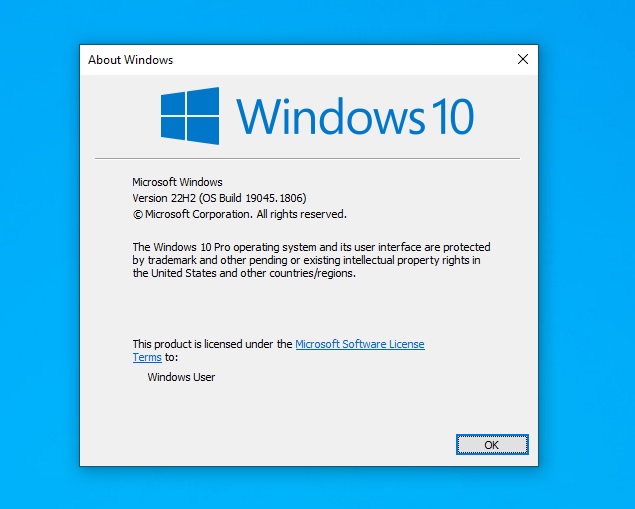
In recent months, we have been contemplating how many incremental versions of Windows 10 Microsoft will still release. From a user’s perspective, it doesn’t matter much because for the past few years, new major versions have brought minimal changes, and now the company is fully focused on the development of Windows 11, possibly even preparing for “Windows 12”.
Now we know for sure that last year’s version 22H2 will be the last. It was released in October, and in November, Microsoft gave it the green light and sent it into wide distribution without detailing the included novelties. Microsoft sets the lifespan of each release to two years. Support for Windows 10 will end on October 14, 2025, which means that this autumn there is room for one final release, a potential version 23H2.
However, we won’t see version 23H2 because we will stick with version 22H2. Its lifespan will extend to three years, until the mentioned October 2025. Microsoft published this information as a notification on their support website and mentioned it in one of their blogs.
Windows 10 will no longer receive major versions.
The above applies to the regular editions: Home, Pro, Pro Education, Pro for Workstations, as well as the enterprise edition (Enterprise) and educational edition (Education). Long-term supported versions (LTSC) have their own lifecycle settings. Currently, Microsoft supports two versions of Windows 10, with support for version 21H2 ending in June. Then, only one version will remain, the very last one.
In total, Microsoft has released fourteen incremental versions of Windows 10, with the last four offering minimal novelties, which were also focused on businesses. New versions were released twice a year, but in the autumn of 2021, the manufacturer changed their approach, stating that we can expect updates once a year. Following this change, only version 22H2 was released.
| Windows 10 Version | Support Start Date | Support End Date |
|---|---|---|
| 22H2 | 18. 10. 2022 | 14. 10. 2025 |
| 21H2 | 16. 11. 2021 | 11. 6. 2024 |
| 21H1 | 18. 5. 2021 | 13. 12. 2022 |
| 20H2 | 20. 10. 2020 | 9. 5. 2023 |
| 2004 | 27. 5. 2020 | 14. 12. 2021 |
| 1909 | 12. 11. 2019 | 10. 5. 2022 |
| 1903 | 21. 5. 2019 | 8. 12. 2020 |
| 1809 | 13. 11. 2018 | 11. 5. 2021 |
| 1803 | 30. 4. 2018 | 11. 5. 2021 |
| 1709 | 17. 10. 2017 | 13. 10. 2020 |
| 1703 | 11. 4. 2017 | 8. 10. 2019 |
| 1607 | 2. 8. 2016 | 9. 4. 2019 |
| 1511 | 10. 11. 2015 | 10. 10. 2017 |
| 1507 | 29. 7. 2015 | 9. 5. 2017 |
In conclusion, Windows 10 has reached a point where new major releases are no longer expected. Instead, the emphasis is now on providing patches and updates for the existing versions. With less than three years of patch support remaining, Windows 10 will gradually fade away, paving the way for the next generation of Microsoft’s operating system.